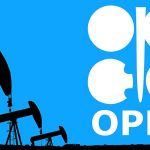A year ago, the oil industry was struggling to stay afloat, with OPEC producers being told they were becoming increasingly irrelevant in a world set on a renewable energy path. Fast forward to today, and analysts are talking about crude oil reaching $100 before the year ends. Now, even if OPEC and its allies wanted to help those who find the current prices too steep, they may not be able to.
Earlier this year, the cartel and its allies, led by Russia, decided to return 400,000 bpd to global supply monthly until their combined output level reached pre-pandemic daily averages. At the time, in early summer, it was widely believed that this would be enough to cap international prices. Forecasts about the death of oil demand were abundant even though oil demand was recovering faster than most earlier forecasts had anticipated.
And then Europe cried it was out of gas.
Inside a month, Brent crude went from $72 to $79, touching $80 a barrel briefly as the shortage of gas, which has spread from Europe to China, spurred even greater demand for oil with natural gas prices so high that oil became a cheaper alternative for power generation. Coal demand also soared sky-high, even in Europe, as utilities struggled to find raw materials to keep the lights on. Once again, OPEC was called upon to add more supply to the market.
The most prominent call for OPEC to boost supply came from the United States. Despite rising oil prices, U.S. shale producers have maintained a strict drilling discipline, focusing on shareholder returns rather than production growth. That has kept U.S. oil production rising relatively modestly even while prices at the pump jumped.
Then Hurricane Ida wiped out an estimated 30 million barrels of production. Russia became the second-largest foreign supplier of oil to the United States, and the Biden administration turned to OPEC.
he cartel did not respond to Washington’s request for more oil, which suggests that’s it may stick to the script and continue adding 400,000 bpd each month. Last week, several sources from OPEC told Reuters that the group could hypothetically frontload its production boosts, increasing production by 800,000 bpd one month and then no boost the following month. This would push supply higher, but the scheme would only have a short-lived effect.
OPEC+ could have scored a few easy points and rub some noses in the fact the world still needs lots of oil by boosting production by more than 400,000 bpd at today’s meeting. In the end, however, the group decided not to. One reason for this decision may have been that implementing such a boost would have been challenging, however.
Vortexa reported last month that there is a considerable disparity in the export capacity of different OPEC+ members. While Saudi Arabia and the UAE raised their combined exports by some 1.9 million bpd over the three months to September, all other producers in the group have recorded export declines since the start of the year.
The difference between oil production and supply is often neglected, but it is nevertheless essential. Supply can be kept higher than production for some time, making production rates less relevant. However, the Vortexa data suggests that most members of the extended oil cartel lack the means to boost their production and thus add to supply.
It was no coincidence that OPEC Secretary-General Mohamed Barkindo said last week that the world cannot afford to underinvest in oil. However strong the green push of Europe, the United States, and more recently China, the recent energy crunch should be proof enough that the world still depends on fossil fuels.
“The energy crisis in Europe and many parts of the world is a wake-up call,” Barkindo said, as quoted by the Wall Street Journal, adding, “It all comes back to the issue of investment across the oil-and-gas industry.”
Yet a lot of OPEC members suffer from chronic underinvestment, aggravated by last year’s pandemic blow to demand. Banks, too busy making net-zero commitments, have also become less willing to finance oil and gas projects, and the companies normally responsible for these projects – the supermajors and other large oil and gas players – have themselves stepped on the net-zero path.
Sure enough, they still invest in their core business with TotalEnergies, for instance, recently unveiling a massive investment plan for Iraq focusing on oil although also including building solar power capacities in OPEC’s number-two exporter. Yet overall, Big Oil is turning its back on what made it Big Oil. And that’s bad news for production capacity. Without that production capacity, even the most West-friendly OPEC member would find it hard to deliver on requests for more oil once barrels in storage have been exhausted.
Much of the world may be in for a difficult winter this year. China is sucking out whatever gas, oil, and coal is available to prepare for the cold months. However, even it may not be completely prepared. Europe is on the brink of blackouts unless it secures enough gas – and gas is tight. The U.S. is the safest thanks to its local production, but it’s not as safe – in terms of energy prices – as it could be. OPEC may come to the rescue, aware that if oil prices rise much further, it will be a problem for everyone. But how long will this rescue mission last if demand continues to rebound as strongly as it has been doing so far?






